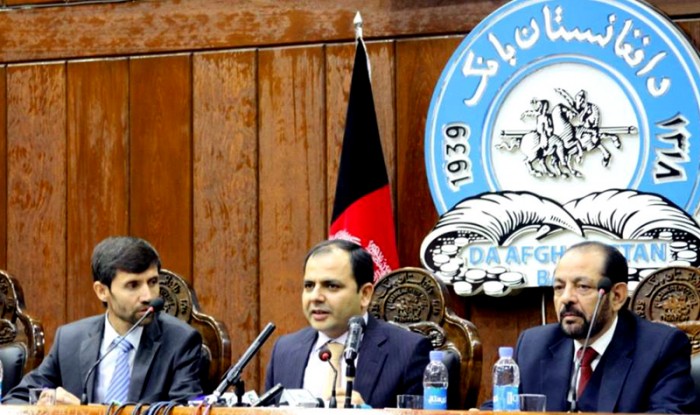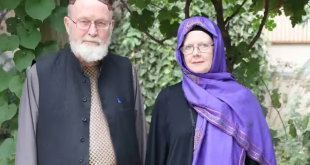By Akhtar M. Nikzad-KABUL: Afghani lost its value by 4.78 percent against the US dollar (USD) in the international market. Due to appreciation of the American unit, other currencies have also experiences significant losses.
The acting governor of the Da Afghanistan Bank (DAB) on Monday said that other currencies overseas also lost value against the USD in the past 10 days.
Khan Afzal Hadawal said that Afghani (Afs) has not lost much value against the USD as compared to other currencies that were shaken hard.
Speaking at the press conference, he said that gains made by the USD are temporary. He said the US dollar would lose value again.
He said the state bank could act to stabilize the local currency, but adopted wait-and-see policy. “We know that US dollar will lose value soon. Injecting dollars into the local exchange markets is of no help at this time. Last week one US dollar was sold at Afs61.3 in the exchange market. However, the exchange rate is now Afs59.20. The DAB has adequate capital in its deposits to maintain the value of Afghani,” the central bank’s governor said.
He said that if Afs was losing value further against the USD then the state bank has to interfere and tame the inflation rate. “The central bank has around US$7 billion in its deposits, and can inject 200 up to 500 million US dollars.”
The governor asked traders and citizens to prefer Afghani in commercial dealings.
Daily Hurriyet adds: The US dollar, which rapidly strengthened in 2014, shook the world’s several local currencies, strong or weak, last year. Many local currencies lost value against the dollar. The euro, especially in the second half of 2014, was seriously shaken, but nevertheless, its annual average value in 2014 was the same as its average annual value in 2013. Thus, its position against the dollar stayed the same on an annual average basis. But it is difficult to say the same for 2015.
The Japanese yen, the British pound, Norwegian, Swedish and Danish krone and the Canadian dollar were all currencies that continuously lost value against the US dollar. The rates are, of course, different; the currencies of emerging countries, including Turkey, lost values in different rates.
On the other hand, there are also currencies that did not lose value, but gained value, against the US dollar: For example, the Chinese Yuan, as well as the South Korean won and the Australian dollar.
Most of the 52 world currencies that the IMF monitors were shaken before the US dollar value rose. The fastest devaluating currencies were the Iranian riyal and the Russian ruble, with the Turkish Lira taking third place.
The euro’s annual average of 2013 was $1.33. The 2014 yearly average was the same. Thus there was no change in terms of yearly averages. However, this should not make us underestimate the euro’s rapid loss of value in the second half of 2014.
The euro started 2014 with $1.36 and remained at that level until mid-July. However, it experienced a constant value loss the rest of the year and completed the last day of 2014 with $1.21. While in the first half of the year, the dollar/euro parity was 1.37, in the second half it went down to 1.27. In other words, there was a 7 percent loss of value in the second half, compared to the average of the first half. Expectations are that the loss of value in the euro will continue in 2015.
Among the currencies which did not lose value against the US dollar were oil producing Middle Eastern countries. Bahrain, Saudi Arabia, Oman, Qatar, Libya, the UAE and Kuwait currencies kept their values against the dollar.
Even though 2014 was the year of the US dollar, certain currencies gained value against the dollar.
The main currencies the values of which exceeded their 2013 averages in 2014 averages have been the Chinese yuan with 0.8 percent, the Swiss franc with 1.2 percent, the Korean won with 3.9 percent and Australian dollar with 6.7 percent.
 Afghanistan Times
Afghanistan Times




